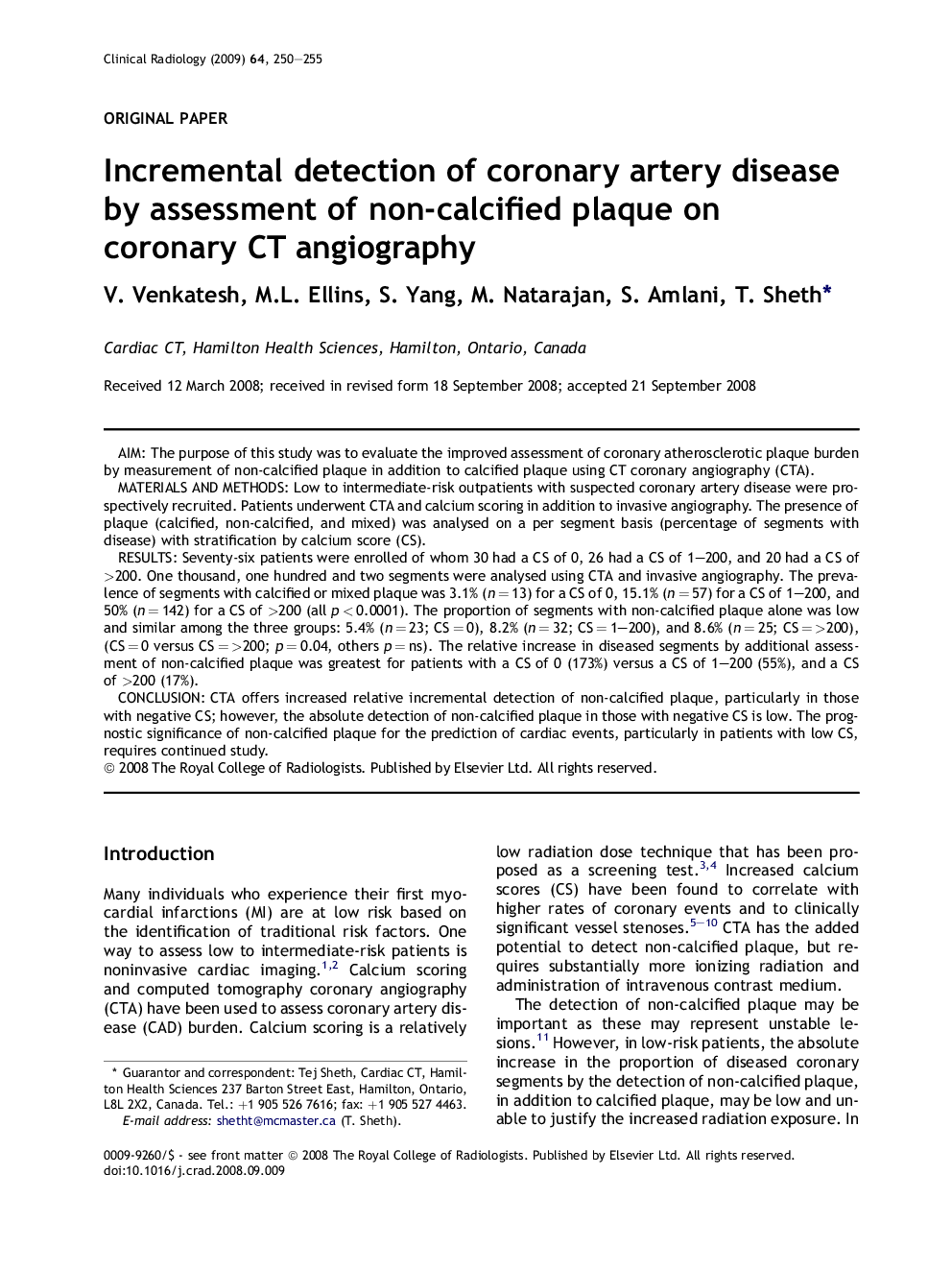| Article ID | Journal | Published Year | Pages | File Type |
|---|---|---|---|---|
| 3983308 | Clinical Radiology | 2009 | 6 Pages |
AimThe purpose of this study was to evaluate the improved assessment of coronary atherosclerotic plaque burden by measurement of non-calcified plaque in addition to calcified plaque using CT coronary angiography (CTA).Materials and methodsLow to intermediate-risk outpatients with suspected coronary artery disease were prospectively recruited. Patients underwent CTA and calcium scoring in addition to invasive angiography. The presence of plaque (calcified, non-calcified, and mixed) was analysed on a per segment basis (percentage of segments with disease) with stratification by calcium score (CS).ResultsSeventy-six patients were enrolled of whom 30 had a CS of 0, 26 had a CS of 1–200, and 20 had a CS of >200. One thousand, one hundred and two segments were analysed using CTA and invasive angiography. The prevalence of segments with calcified or mixed plaque was 3.1% (n = 13) for a CS of 0, 15.1% (n = 57) for a CS of 1–200, and 50% (n = 142) for a CS of >200 (all p < 0.0001). The proportion of segments with non-calcified plaque alone was low and similar among the three groups: 5.4% (n = 23; CS = 0), 8.2% (n = 32; CS = 1–200), and 8.6% (n = 25; CS = >200), (CS = 0 versus CS = >200; p = 0.04, others p = ns). The relative increase in diseased segments by additional assessment of non-calcified plaque was greatest for patients with a CS of 0 (173%) versus a CS of 1–200 (55%), and a CS of >200 (17%).ConclusionCTA offers increased relative incremental detection of non-calcified plaque, particularly in those with negative CS; however, the absolute detection of non-calcified plaque in those with negative CS is low. The prognostic significance of non-calcified plaque for the prediction of cardiac events, particularly in patients with low CS, requires continued study.
